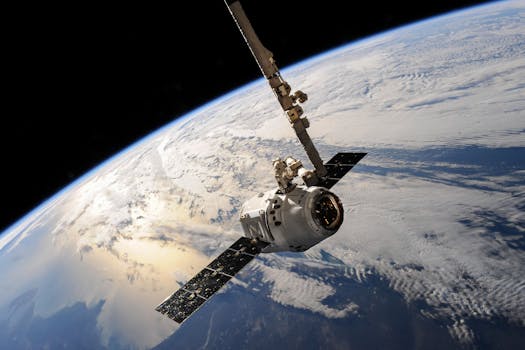The Future of Satellites: Revolutionizing Global Connectivity with WordPress

The Future of Satellites is an exciting and rapidly evolving field, with new technologies and innovations emerging every day. As we look to the future, it’s clear that satellites will play an increasingly important role in shaping our world. The Future of Satellites is poised to revolutionize global connectivity, and WordPress is at the forefront of this revolution. With advancements in space technology, satellites are becoming increasingly important for communication, navigation, and remote sensing.
Satellites have been a crucial part of our daily lives for decades, providing us with essential services such as television broadcasting, weather forecasting, and GPS navigation. However, the next generation of satellites is being designed to do much more than that. With the advent of small satellite technology, it’s now possible to launch constellations of satellites into orbit, providing global coverage and connectivity to even the most remote areas of the world.
Advancements in Space Technology
One of the key drivers of the satellite revolution is the advancement of space technology. New materials, designs, and manufacturing techniques are making it possible to build smaller, lighter, and more efficient satellites. This, in turn, is reducing the cost of launching satellites into orbit, making it more accessible to companies and organizations around the world. Additionally, the development of reusable rockets is further reducing the cost of access to space, making it possible to launch more satellites than ever before.
Another area of advancement is in the field of propulsion systems. New technologies such as electric propulsion and advanced ion engines are being developed, which will enable satellites to maneuver more efficiently and extend their lifespan. This will be particularly important for satellites in geostationary orbit, which will be able to maintain their position and provide continuous coverage to a specific region.
Applications of Satellites
Satellites have a wide range of applications, from communication and navigation to remote sensing and earth observation. With the next generation of satellites, we can expect to see even more innovative uses of satellite technology. For example, satellite-based internet services such as SpaceX’s Starlink and Amazon’s Kuiper Systems are aiming to provide global internet connectivity, bridging the digital divide and bringing the internet to remote and underserved communities.
Satellites are also being used for earth observation, providing valuable insights into our planet’s climate, weather patterns, and natural resources. With high-resolution imaging and advanced sensors, satellites can monitor deforestation, track ocean health, and predict natural disasters. This information can be used to inform policy decisions, mitigate the effects of climate change, and promote sustainable development.
Challenges and Opportunities
While the future of satellites is exciting, there are also challenges that need to be addressed. One of the biggest concerns is the growing amount of space debris in orbit, which can pose a hazard to operational satellites and make it difficult to launch new ones. Additionally, the increasing number of satellites in orbit is raising concerns about congestion and interference, which can impact the performance of satellite-based services.
Despite these challenges, the future of satellites presents many opportunities for innovation and growth. With the development of new technologies and business models, we can expect to see new players entering the market and new applications emerging. For example, satellite-based services such as satellite-based advertising and satellite-based entertainment are being explored, which could provide new revenue streams for satellite operators and open up new markets for satellite-based services.
Conclusion
In conclusion, the future of satellites is a rapidly evolving field, with new technologies, innovations, and applications emerging every day. As we look to the future, it’s clear that satellites will play an increasingly important role in shaping our world. With advancements in space technology, satellites are becoming increasingly important for communication, navigation, and remote sensing. While there are challenges that need to be addressed, the opportunities for innovation and growth are vast, and we can expect to see new players, new applications, and new business models emerging in the years to come.





